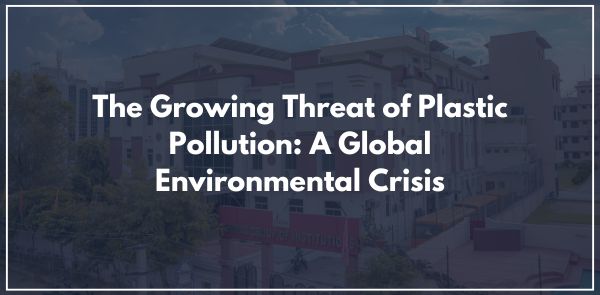
Introduction: The environmental challenges we face today are immense, but few issues have garnered as much global attention as plastic pollution. This pervasive problem affects ecosystems, wildlife, and human health across the planet. Despite efforts to mitigate its impact, plastic waste continues to accumulate in landfills, oceans, and even the food chain. Addressing plastic pollution requires urgent, coordinated action at every level—individual, corporate, and governmental.
Problem: Plastic production has skyrocketed over the last century. From less than 2 million tons in 1950, global production exceeded 350 million tons in 2018, and it is expected to double by 2040. This vast increase is driven by the demand for single-use plastics, particularly in packaging, consumer goods, and the food industry.
Of the total plastic produced, an alarming 91% is not recycled. Instead, it ends up in landfills, incinerators, or the natural environment, particularly the oceans. It is estimated that over 8 million tons of plastic waste leak into oceans every year, the equivalent of dumping a garbage truck full of plastic into the ocean every minute.
Impact: The oceans have become a primary dumping ground for plastic waste, with severe consequences for marine life. Plastics do not biodegrade; they break down into smaller pieces called micro plastics, which are often ingested by marine animals. Studies show that over 700 marine species are affected by plastic pollution, either through ingestion, entanglement, or habitat disruption.
For example, sea turtles often mistake plastic bags for jellyfish, one of their main food sources. When consumed, these plastics can cause internal blockages and lead to starvation. Similarly, seabirds and marine mammals such as dolphins and whales suffer from plastic ingestion and entanglement, which often proves fatal.
Human Health Risks: Plastics contain various harmful chemicals, including phthalates, bisphenol A (BPA), and polybrominated diphenyl ethers (PBDEs), which are used as plasticizers, flame retardants, and stabilizers. When plastics are improperly disposed of, these chemicals can leach into the soil and water, contaminating ecosystems and eventually making their way into the food and water consumed by people.
In addition to the risks posed by microplastics, the chemicals found in plastics can disrupt endocrine systems and are linked to numerous health problems, such as hormonal imbalances, reproductive issues, and even certain cancers. The widespread presence of plastic waste thus not only threatens ecosystems but also poses a significant health risk to people worldwide.
Socioeconomic Impacts: The economic consequences of plastic pollution are profound. It costs millions of dollars annually to clean up beaches, rivers, and oceans. For instance, coastal tourism and fisheries, both vital economic sectors in many countries, suffer significant losses due to plastic debris that makes recreational areas less attractive and harms marine life.
Developing nations bear a disproportionate burden from plastic pollution. Many of these countries lack the infrastructure to manage plastic waste effectively, leading to greater environmental degradation. Additionally, the trade of plastic waste from richer nations to poorer ones exacerbates the problem, overwhelming local waste management systems and creating serious health risks for communities that depend on contaminated rivers and oceans for their livelihoods.
Solutions and Global Response: To combat the plastic pollution crisis, both global and local initiatives have been proposed and implemented. Several countries have introduced bans or taxes on single-use plastics such as bags, straws, and utensils. The European Union, for example, implemented a ban on single-use plastics in 2021. Similarly, countries like Kenya, India, and Rwanda have imposed strict penalties for the production or use of plastic bags.
Corporate responsibility has also become a focal point. Many large companies are exploring alternatives to plastic packaging, with innovations ranging from biodegradable materials to reusable packaging systems. Some have committed to reducing their plastic footprint by using more recycled materials or eliminating plastic packaging altogether.
Individual action plays a significant role as well. Consumers can help by reducing their reliance on single-use plastics, supporting products made from recycled materials, and participating in recycling programs. Education and awareness campaigns can foster a culture of sustainability and environmental stewardship at the grassroots level.
Poddar Group of Institutions is committed to holistic development through the lens of global issues such as plastic pollution. Experiential learning and practical exposure will equip students with knowledge and skills in creating sustainable solutions and contributing to environmental conservation.
Conclusion: Plastic pollution is an environmental crisis that demands immediate and sustained action. Its impacts are far-reaching, from harming marine ecosystems to jeopardizing human health. While progress is being made in certain areas, such as banning single-use plastics and encouraging corporate responsibility, the global community must continue to push for systemic changes in production, consumption, and waste management. Only through collective effort can we hope to mitigate the devastating effects of plastic pollution and safeguard the future of our planet.